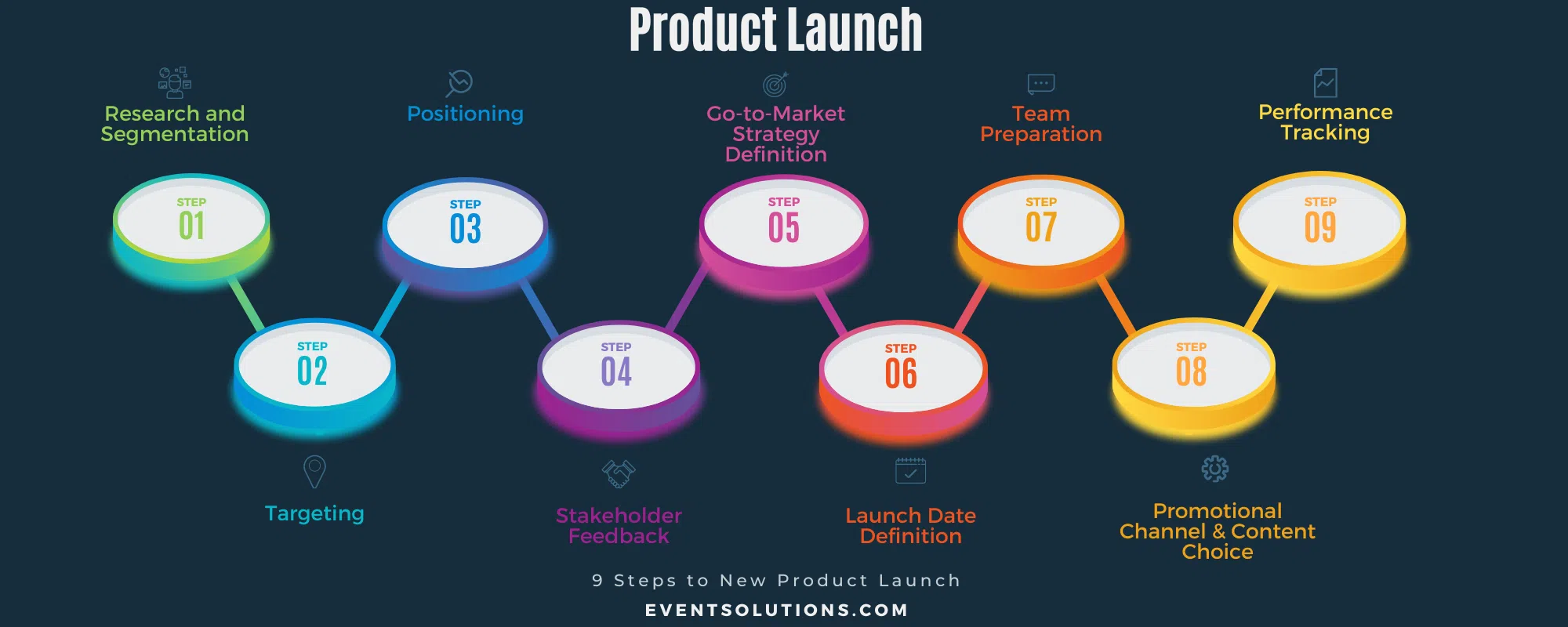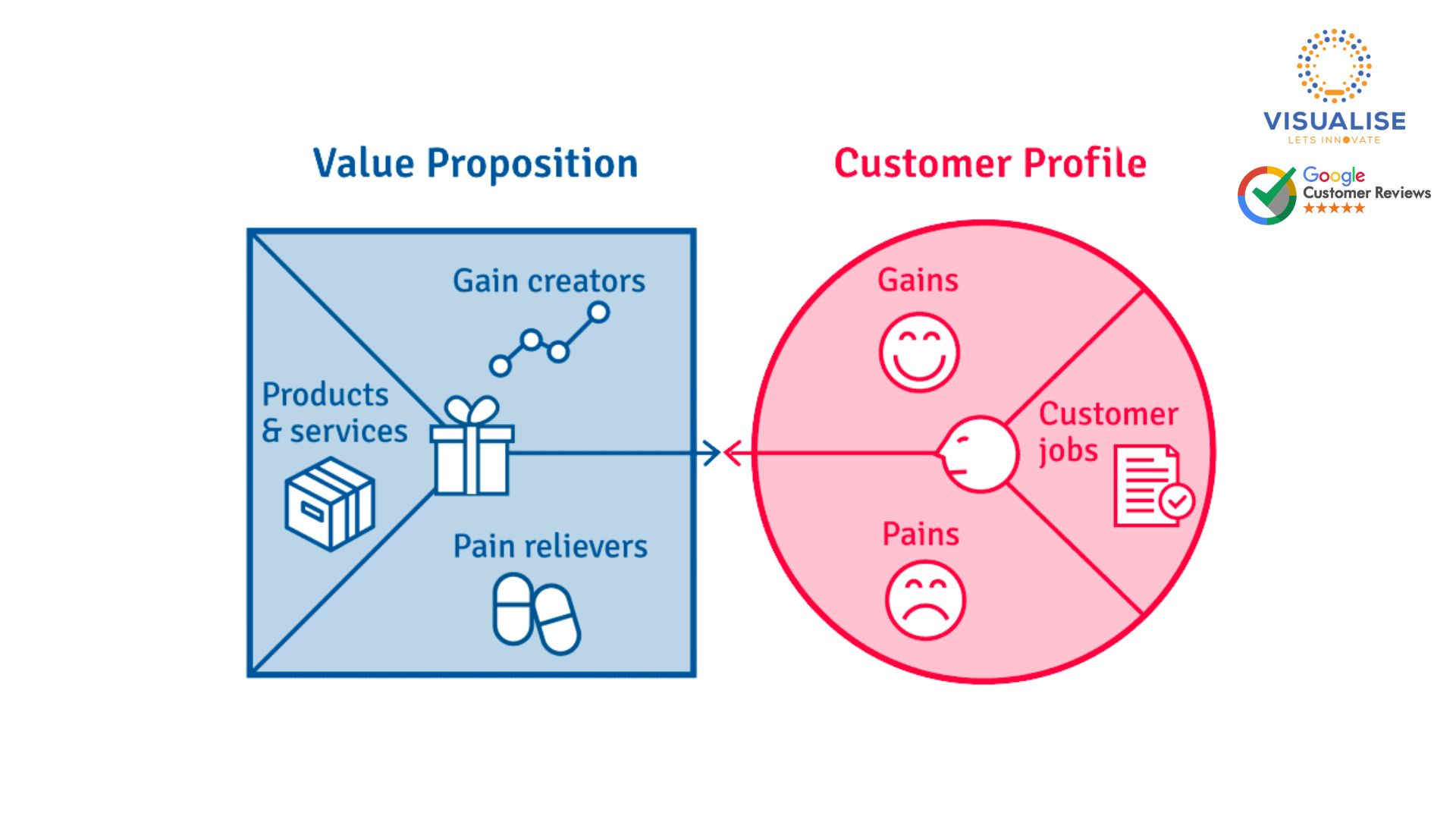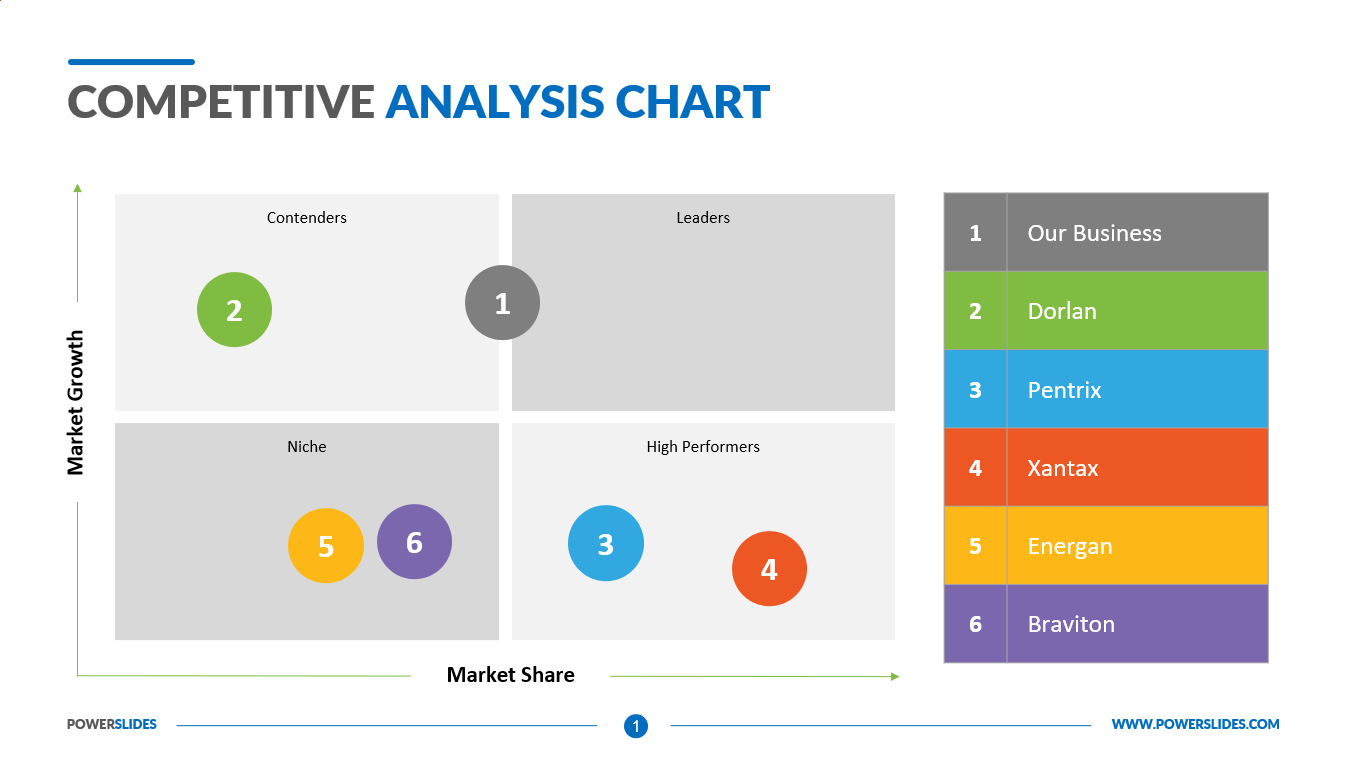Launching a new product or service can feel like navigating uncharted waters—without a solid plan, the risks can be high. For businesses striving to maximise market impact while reducing uncertainty, having a comprehensive Go-to-Market (GTM) strategy is non-negotiable.
A well-executed GTM plan aligns your product’s launch with targeted customer segments, strategic positioning, and market demand, setting the stage for success. In this guide, you’ll learn how to create a GTM plan that leverages data, refines market positioning, and ensures your product reaches the right audience at the right time.
- Align product launches with market demand: Craft a GTM plan that targets the right customer segments and ensures product-market fit.
- Conduct thorough market research: Define your Total Addressable Market (TAM), Serviceable Addressable Market (SAM), and Service Obtainable Market (SOM) to better align your offerings with real customer needs.
- Competitive analysis is key: Use insights from competitors to anticipate market trends and refine your positioning strategy.
- Strategic positioning drives success: Ensure your value proposition is clear and compelling, resonating with the target audience.
- Data-driven decision making: Utilise customer insights and analytics to guide your GTM efforts, ensuring the highest chance of success.
- Reduce risk with a structured plan: A well-designed GTM strategy mitigates launch risks and ensures all stakeholders are aligned on business goals.
What does a good Go-To-Market Plan look like?
Go-to-market (GTM) planning is the strategic process of taking a product or service to the market, targeting the right customers, and ensuring the highest impact on revenue and market share. It requires a clear definition of the target market, a compelling value proposition, and the creation of a go-to-market strategy plan to maximise market success.
A comprehensive go-to-market plan is critical for any business aiming to achieve seamless product or service launches. It provides a structured roadmap that aligns your resources, messaging, and tactical activities with key business objectives, ultimately driving increased market penetration and accelerating revenue growth.
When considering how to develop a go-to-market plan, several essential elements come into play. These include in-depth market research, competitive analysis, customer segmentation, and strategic product positioning. By fully understanding the market landscape and buyer behaviour, businesses can craft unique strategies that not only differentiate them from competitors but also capture the attention of their ideal audience.
Moreover, a well-executed GTM plan is pivotal in reducing risks and uncertainties inherent in product launches. By thoroughly planning marketing and sales activities, companies can anticipate challenges, mitigate risks, and set the stage for a more successful market entry.

Different Types of Go-to-Market Strategies
When developing a go-to-market plan, companies can choose from a variety of approaches, each with its own unique benefits and challenges. Understanding these strategies is essential when learning how to develop a go-to-market plan that aligns with business goals. Below are three widely used go-to-market strategies, and their respective advantages.
Direct Sales Strategy
A direct sales strategy involves selling products or services directly to customers without the use of intermediaries. This approach offers businesses complete control over the sales process and direct ownership of customer relationships. By bypassing middlemen, companies can ensure their value proposition is communicated clearly and effectively, building stronger customer connections.
This go-to-market strategy plan is especially useful for businesses selling complex or high-value products that require personalised interactions. In industries like software, companies often utilise direct sales for enterprise-level solutions that demand customisation and tailored implementation. Sales representatives play a critical role here, as they engage with customers to better understand their specific needs and adjust the product offering accordingly.
That said, executing a direct sales strategy can be resource-heavy. It requires investment in building and training a robust sales team equipped to sell the product or service effectively. Additionally, the strategy often involves significant travel and in-person meetings, which can increase the overall cost of sales.
Online Sales Strategy
In today’s digital landscape, an online sales strategy has gained significant traction. This go-to-market planning method leverages e-commerce platforms and digital tools to reach customers directly. Online sales offer scalability and convenience, making it easier for businesses to reach a wider audience while reducing operational costs.
Businesses that adopt this strategy must invest in secure, user-friendly digital platforms, whether through a website or mobile app, to provide seamless shopping experiences. Ensuring secure transactions and protecting customer data is crucial, as is implementing a strong digital marketing campaign to drive traffic and conversions.
One of the most significant advantages of an online sales strategy is the ability to reach a global market. With the internet breaking down geographical barriers, businesses can tap into international markets, unlocking new revenue streams and growth opportunities. However, this strategy also brings challenges. The online marketplace is highly competitive, requiring companies to constantly refine their digital marketing efforts to remain visible and appealing. Furthermore, continuous platform optimisation is necessary to keep up with evolving consumer preferences and technological advancements.
Partner-Led Strategy
A partner-led strategy relies on collaboration with external channel partners, such as distributors, resellers, or affiliates, to reach customers. This approach allows businesses to leverage their partners’ existing customer bases and market expertise to accelerate growth. Partnering with established industry players can provide quick access to new markets without the need for significant in-house resources.
This strategy is especially beneficial for companies looking to expand into unfamiliar markets or those lacking the internal capacity to launch a full-scale go-to-market strategy plan. By collaborating with local partners who understand the market landscape, businesses can mitigate challenges and accelerate their market penetration.
However, executing a partner-led strategy requires meticulous planning and relationship management. It’s essential to select partners whose brand values align with your own and who have a strong reputation in their respective markets. Maintaining open communication and nurturing trust is key to building successful long-term partnerships. Moreover, providing the necessary resources, such as training and marketing support, ensures that your partners are well-equipped to promote and sell your offerings effectively.
Why Do You Need a GTM Plan?
A well-structured GTM plan is essential for businesses looking to carve out a distinct position in the market. By focusing on go-to-market planning, you can ensure that your product positioning, messaging, and value proposition resonate with your target audience, giving you a competitive edge. Here are key reasons why a GTM plan is critical.
To Develop Product Positioning and Messaging that Stand Out
Product positioning defines how your product or service is perceived in the market. It involves understanding where your product fits, what makes it unique, and how you can best communicate that to your target customers. Strong positioning means your audience will easily recognise the value your product offers compared to competitors.
When considering how to develop a go-to-market plan, it’s crucial to first identify your target audience and craft messaging that speaks directly to their needs and desires. A deep understanding of your customer persona allows you to tailor your message in a way that not only grabs attention but also resonates on a deeper level. Your message must be carefully aligned with consumer pain points to ensure that your product positioning is both profitable and impactful.
To Create a Compelling Value Proposition for Sales Channels
A strong value proposition is the foundation of any successful go-to-market strategy plan. It is a clear and concise statement of the value your product or service delivers to customers and why it should be their choice. The value proposition must address how your company operates, the problems your product solves, and why it stands out from the competition.
Your value proposition is a marketing tool that can convince potential customers that your offering provides the best solution to their specific problems. When framed compellingly, it differentiates your product from similar offerings on the market, creating a strong reason for customers to choose you over rivals.

To Ensure Your Product Portfolio Stays Competitive
Remaining competitive in the market is an ongoing challenge. Competitors are constantly evolving, which means you must keep a close eye on market dynamics to maintain your position. This is where the elements of a go-to-market strategy come into play. A strong GTM plan ensures you stay ahead of competitors by identifying the following:
- Customer Problems: Understand the challenges your customers face so you can offer solutions that directly address their needs.
- Innovation Opportunities: Regularly assess areas for innovation, whether through product development, service enhancements, or new technologies.
- Customer Service Improvements: Continuously refine customer service offerings to ensure satisfaction and long-term loyalty.

By incorporating these elements into your go-to-market planning, your business can anticipate market changes, meet customer demands, and maintain a competitive edge.
What Matters Most?
Customer discovery and validation typically lead to a stronger product-market fit, ensuring that your offerings truly address the needs of the market. We often discover that clearly defining our target market enables more focused efforts, allowing for effective resource allocation and maximum impact. Additionally, building an agile go-to-market strategy is essential; being able to adapt quickly to market feedback ensures that you remain competitive and responsive to changes in the landscape.Get In Touch
Is there a difference between a sales strategy and a go to market strategy?
Yes, there is a fundamental difference between a sales strategy and go-to-market planning. While both are integral to driving revenue, their scope and focus are distinct.
A sales strategy is more focused on how a company will sell its products or services to generate revenue. It involves practical tactics such as pricing, choosing distribution channels, and deploying specific sales techniques aimed at reaching customers and closing deals. Essentially, the sales strategy is about how to approach potential customers and convince them to make a purchase.
On the other hand, a go-to-market (GTM) strategy is far broader in scope. It encompasses the entire journey, from product conception to reaching the target audience and everything in between. A well-structured gtm plan includes market research, identifying the ideal target audience, crafting a strong product positioning, and outlining a comprehensive marketing approach that dovetails with the sales effort.
In simpler terms, a sales strategy forms just one part of the go-to-market strategy plan. The GTM strategy maps out the broader picture, while the sales strategy is a focused subset that dives into the specifics of selling the product.
What is the difference between go to market and marketing plan?
Although they may seem similar at first glance, a go-to-market plan and a marketing strategy serve different purposes and have distinct focuses.
A marketing strategy is a long-term, overarching approach designed to promote products and services consistently. It’s about understanding your target market, strengthening brand presence, and nurturing customers through the sales journey. This strategy outlines the continual actions a company must undertake to stay competitive and reach its ideal audience over time.
In contrast, a go-to-market strategy is more short-term and specific, focusing on the introduction of a new product or service. Through detailed go-to-market planning, this strategy ensures that the product reaches the right customers and educates them on its value and benefits. The elements of a go-to-market strategy create a structured plan that guides the product launch, focusing on immediate impact and market entry.
Simply put, a go-to-market strategy plan is a targeted, short-term roadmap for launching a new product, whereas a marketing strategy is a broader, ongoing framework aligned with long-term business goals. In the early stages, businesses might find that these two strategies overlap, particularly when introducing initial offerings. However, as the company matures, the GTM plan and marketing strategy often become distinct, each with unique goals and responsibilities.
What Are the Core Components of a Great GTM Plan?
Before examining the elements of a go-to-market strategy, it’s important to first understand the team structure that drives the go-to-market planning process. A successful gtm plan requires collaboration across multiple departments within an organisation, ensuring all key players are aligned in their efforts.
Who Oversees the Execution of a GTM Strategy?
Successfully crafting and delivering a go-to-market strategy plan is a coordinated effort, requiring collaboration from various teams within an organisation. Here’s a breakdown of the key players involved in developing and executing a GTM plan:
Senior Leadership
Key decision-makers, such as the CEO, COO, and CFO, are instrumental in defining the company’s vision and long-term business objectives. Their role is to ensure that the gtm plan is fully aligned with these goals, and they are responsible for allocating the necessary resources to support its execution. Without their strategic oversight, the plan risks losing focus and failing to meet the company’s broader aspirations.
Product Management
Product managers are crucial to the go-to-market planning process. They are well-versed in the intricacies of the market and are tasked with shaping the product roadmap. This involves ensuring that the product or service not only meets market demand but also aligns with customer expectations. Working in close collaboration with marketing and sales teams, product managers ensure that features and positioning are cohesive with the overall gtm plan.
Marketing Teams
Marketing is at the heart of driving demand and raising brand awareness. Their work includes everything from messaging and content creation to executing targeted campaigns that capture attention, nurture leads, and guide potential customers through the buying journey. Marketing teams also play a significant role in devising account-based marketing (ABM) strategies for high-value customers. They must work hand-in-hand with sales to ensure a unified customer journey from the first touchpoint to purchase.
Sales Teams
Sales teams are responsible for directly engaging potential clients, guiding them through the buying process, and closing deals. Their insights into customer preferences and market trends are critical for refining the go-to-market strategy. Sales teams are responsible for ensuring the sales process, from lead generation through to conversion, is in sync with the overall GTM strategy, helping to drive business growth.
Customer Success Teams
Customer success teams focus on delivering value post-sale, ensuring that customers achieve their intended outcomes with the product or service. Their role is essential for fostering long-term customer relationships, driving retention, and identifying opportunities for upselling or cross-selling. Their feedback loop is also important for ongoing improvements to the go-to-market strategy plan, as they provide real-world insights into how the product or service performs in the hands of users.
Cross-Functional Collaboration
For a gtm plan to succeed, effective collaboration across all teams is essential. Regular communication and alignment meetings are vital to ensure that everyone is working towards common goals. This cross-functional collaboration helps avoid silos and ensures that the elements of a go-to-market strategy are executed efficiently, ultimately leading to successful product launches and sustainable growth.
By clearly defining the roles and responsibilities of each team involved, organisations can maximise the impact of their go-to-market planning, ensuring they are well-positioned for long-term success in the market.
What are the basics of a go-to-market strategy?
A well-executed go-to-market plan involves several critical components that help ensure success. Below are key elements of a go-to-market strategy that should be considered when structuring your GTM plan.
1. Go-to-Market Plan Essential: Market Size and Growth
One of the foundational aspects of go-to-market planning is accurately sizing your target market and estimating potential growth. This process can be visualised as a target with concentric rings, where the ideal customer profile (ICP) is at the centre. Surrounding the ICP are rings representing less likely sales opportunities, helping to clearly map out your market potential.
- TAM and SAM: The outermost ring of this target represents the Total Addressable Market (TAM), encompassing all potential market opportunities for your product or service. However, not all of these opportunities are realistic targets. Moving inward, the Serviceable Addressable Market (SAM) reflects the portion of the market that your business can realistically serve based on limitations such as geography or specialisation.
- SOM and ICP: The Service Obtainable Market (SOM) is an even smaller subset, representing the percentage of your SAM that you can realistically capture. At the very centre lies the ICP—these are the customers who will derive the most value from your product and are most likely to provide repeat business. Analysing your SOM and refining your ICP is crucial in understanding who you should target within your go-to-market strategy plan.
Source: Gartner
2. Go-to-Market Plan Essential: Routes to Market
Another important element in how to develop a go-to-market plan is identifying your routes to market. This involves determining whether to use direct sales, channel partners, or a combination of both.
For some companies, direct sales are the primary channel, allowing for complete control over customer relationships. Others might choose to rely on channel partners, such as value-added resellers, global systems integrators, solution providers, or e-commerce platforms. Regardless of the method, it is essential to clearly define these revenue-generating channels within your gtm plan to ensure every route to market is optimised and well-aligned with your sales objectives.
3. Score Your Target Customer
Customer profiling is a critical step in any successful go-to-market strategy plan. Each target customer should be scored based on how well they align with your ICP. Start by asking key questions:
- Do they fit your value proposition?
- Are they the type of organisation with a problem your product can solve?
Once you’ve identified a fit, the next step is determining whether they have an undiscovered need. This refers to a situation where the customer has a problem but may not be fully aware of it. For instance, a company with on-premise workloads could benefit from cloud solutions, but they may not yet recognise the pain points associated with their current setup. Scoring accounts in this way ensures that you’re targeting those who both fit your business model and have a latent or emerging need.
4. Understand the Customer’s Need
Once you’ve scored your target customers, the next step is to assess their specific needs. The process involves asking questions to break down their requirements:
- Do they need your product or service?
- Do they recognise the problems they’re facing?
- Are they allocating internal resources to address this problem?
If the answer to these questions is yes, this indicates what is known as “discovered need.” Discovered need is easier to act upon than undiscovered need because the customer is already aware of their challenges and is looking for solutions. Recognising and responding to discovered need allows your business to deliver targeted solutions that resonate with the customer’s immediate concerns, enhancing the overall effectiveness of your GTM plan.
Our Tactical Recommendations
We recommend leveraging data analytics to inform market segmentation and track key performance indicators; clients often find this approach leads to more targeted strategies that yield better results. Implementing customer feedback loops is crucial for continuously refining offerings, helping align products with evolving customer needs. Lastly, ensuring that marketing and sales teams are aligned around common goals typically enhances execution and drives better outcomes in your go-to-market efforts.Get In Touch
How to Optimise Your GTM Plan to Reduce Time to Market
What Is Speed to Market?
Speed to market (STM) refers to the time it takes to deliver a product, website, or landing page from its inception to its launch. STM is a key performance indicator (KPI) often used to measure the success and efficiency of a launch. Reducing the time it takes to get a product or service to market can be a crucial competitive advantage.
Is Speed to Market the Same as Time to Market?
Yes, “time to market” (TTM) is often used interchangeably with speed to market. Both terms refer to the time span from when a product or project is conceived to when it is launched. Whether called TTM or STM, the goal is to shorten this period as much as possible to achieve market impact faster.
Why Is Speed to Market Critical?
In today’s fast-paced business environment, speed is everything. As industries evolve rapidly, companies face increasing pressure to innovate and differentiate themselves. Being first to market can secure a strong competitive position, while a slow go-to-market approach could mean lost opportunities.
For many web-based businesses and B2B companies, the ability to innovate quickly is directly linked to their market position and brand identity. The faster you can bring an innovation to market, the greater your chances of becoming an industry leader, building customer loyalty, and securing long-term growth. Speed to market has become a key differentiator, especially in highly competitive sectors.
Source: McKinsey
Optimisation Techniques for Your GTM Plan
To optimise your go-to-market planning and reduce time to market, consider these advanced techniques:
Leveraging Automation to Streamline GTM Processes
Incorporating automation into your gtm plan can dramatically increase efficiency, ensuring that marketing and sales campaigns are executed consistently and with minimal manual intervention. Automation reduces the time spent on repetitive tasks, allowing teams to focus on high-value activities such as strategy development and customer engagement.
Key benefits of automation include:
- Increased Efficiency: Automating routine tasks helps teams dedicate more time to strategic initiatives, accelerating the overall go-to-market planning process.
- Consistency: Automated processes reduce human error, ensuring that marketing messages, outreach, and follow-up are delivered consistently.
- Scalability: Automation allows your business to scale operations without needing to increase resources proportionally, enabling faster growth.
- Real-time Insights: Automated systems provide real-time data and analytics, allowing teams to make informed decisions quickly and adapt strategies based on live feedback.
Integrating Account-Based Experience (ABX) with GTM
ABX is a highly personalised approach that focuses on high-value accounts, making it an excellent addition to your go-to-market strategy plan. Integrating ABX with your GTM strategy enables you to tailor marketing and sales efforts to the specific needs of each account, ensuring maximum impact.
Why ABX is essential for GTM optimisation:
- Focus on High-Value Accounts: ABX ensures that your efforts are concentrated on accounts with the highest conversion potential, leading to better outcomes.
- Personalised Sales and Marketing: Tailoring your messaging to individual accounts increases engagement and builds stronger relationships, ultimately accelerating the sales cycle.
- Alignment Between Sales and Marketing: ABX fosters closer collaboration between sales and marketing teams, ensuring both are working towards the same objectives.
The Role of Data Analytics in an Advanced GTM Strategy
Data-driven decision-making is critical for optimising your gtm plan. By analysing customer behaviour, market trends, and sales performance, businesses can make informed decisions that align with their goals and market conditions.
Analytics provide valuable insights that allow you to:
- Identify High-Value Accounts: Reviewing engagement levels, demographic data, and previous interactions helps you target the accounts most likely to convert.
- Forecast Success: Advanced algorithms can predict which accounts are most likely to convert based on historical data, allowing you to focus your resources where they will be most effective.
- Implement Account Scoring: Scoring potential leads based on their likelihood to convert and their long-term value enables better prioritisation of efforts within your go-to-market strategy plan.
By leveraging automation, integrating ABX, and using advanced analytics, you can significantly reduce time to market while ensuring that your go-to-market planning is as effective as possible.







